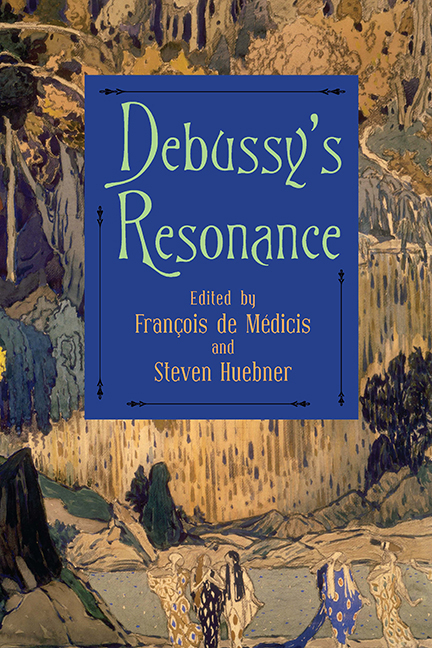Book contents
- Frontmatter
- Contents
- List of Illustrations
- Acknowledgments
- List of Abbreviations
- Introduction
- Part One Historiographical and Editorial Issues
- Part Two Style and Genre
- 5 The “Song Triptych”: Reflections on a Debussyan Genre
- 6 Composing after Wagner: The Music of Bruneau and Debussy, 1890–1902
- 7 Between Massenet and Wagner
- 8 Debussy's Concept of Orchestration
- 9 Oriental and Iberian Resonances in Early Debussy Songs
- Part Three History and Hermeneutics
- Part Four Theoretical Issues
- Part Five Performance and Reception
- List of Contributors
- Index
5 - The “Song Triptych”: Reflections on a Debussyan Genre
from Part Two - Style and Genre
Published online by Cambridge University Press: 27 July 2019
- Frontmatter
- Contents
- List of Illustrations
- Acknowledgments
- List of Abbreviations
- Introduction
- Part One Historiographical and Editorial Issues
- Part Two Style and Genre
- 5 The “Song Triptych”: Reflections on a Debussyan Genre
- 6 Composing after Wagner: The Music of Bruneau and Debussy, 1890–1902
- 7 Between Massenet and Wagner
- 8 Debussy's Concept of Orchestration
- 9 Oriental and Iberian Resonances in Early Debussy Songs
- Part Three History and Hermeneutics
- Part Four Theoretical Issues
- Part Five Performance and Reception
- List of Contributors
- Index
Summary
À quoi bon, vraiment, accorder la voix de Bilitis soit en majeur, soit en mineur puisqu'elle a la voix la plus persuasive du monde?—Tu me diras, “Pourquoi as-tu fait la musique?” Ça, vieux loup, c'est autre chose […] C'est pour autres décors.
—Debussy, letter to Pierre LouÿsAs is well known, Debussy significantly changed his approach to song composition around the years 1890–91. While he had been writing mélodies more or less continuously since his earliest student days, up to this point he had tended to set texts either singly or in various different groupings—for example, the six Ariettes, paysages belges et aquarelles of 1888 (later revised as Ariettes oubliées, 1903), and the Cinq poèmes de Charles Baudelaire of 1887–89. From around 1890 he was to conceive and present the vast majority of his mélodies in groups of three, often titled as such—as in one of the first, Trois mélodies de Paul Verlaine (composed 1891, published 1901), and the last, Trois poèmes de Stéphane Mallarmé (1913).
By some measures, the total number of eight “song triptychs” that emerged across this span of more than two decades renders this genre (or subgenre) the one for which Debussy wrote most often. It is thus surprising how little analytical attention it has so far received in the literature. With a few significant exceptions, scholars have tended to treat Debussy's songs individually, in isolation from their composed and published companions. From such studies we have gained, by now, a rich and varied perspective on the approaches to text setting and vocal writing that characterized Debussy's distinct contribution to the history of French art song. But a closer investigation of his evolving approach to the tripartite collection of mélodies—for which he almost always brought together, into new succession, three texts by the same poet—can bring into view further questions of potentially wide implication for our understanding, on one hand, of the famously problematic genre of the “song cycle” and, on the other, of Debussy's own creative development across these two crucial creative decades.
There was of course plenty of precedent for composing sets of three songs. Schubert and Schumann each wrote a few; a more proximate and relevant instance is possibly Gabriel Fauré's very first song cycle (and his only triptych), the 1878 Poèmes d'un jour, op. 21.
- Type
- Chapter
- Information
- Debussy's Resonance , pp. 127 - 174Publisher: Boydell & BrewerPrint publication year: 2018

